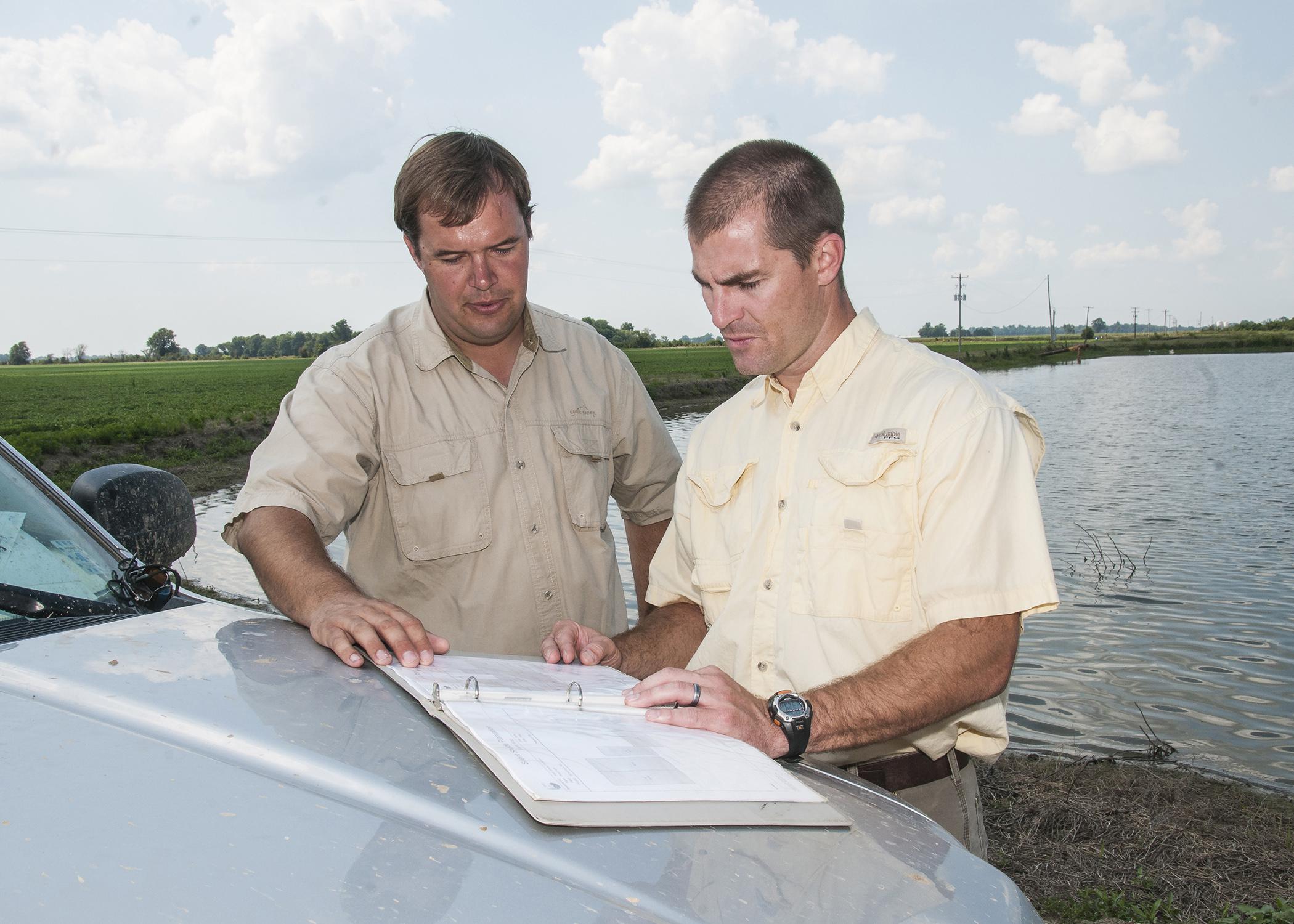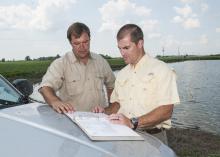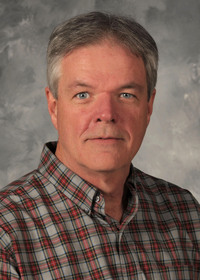Information Possibly Outdated
The information presented on this page was originally released on May 23, 2013. It may not be outdated, but please search our site for more current information. If you plan to quote or reference this information in a publication, please check with the Extension specialist or author before proceeding.
Belzoni farm uses REACH methods
MISSISSIPPI STATE -- Conservation-minded Mississippi farmers have enrolled 126,470 acres in the Research and Education to Advance Conservation and Habitat program, a Mississippi State University effort to impact land management.
Robbie Kroger, an assistant professor of aquatic sciences in the MSU Department of Wildlife, Fisheries and Aquaculture, leads the REACH initiative, which as of April includes 41 farmers. Participation in the program impacts management practices on their acreage.
“These farmers have some sort of conservation mindset, and they want to be a part of REACH to get access to expertise across the MSU campus and from the many collaborating agencies,” Kroger said. “They get scientifically defensible data from us, and they get to tell the story of what they’re doing on their land.”
REACH is a collaboration of MSU’s Extension Service, Mississippi Agricultural and Forestry Experiment Station, and Forest and Wildlife Research Center. Kroger said collaborating producers get to meet and learn from each other, and this information sharing is a significant benefit of the initiative.
“We are approaching the farmer and asking, ‘What do you need help with?’” Kroger said. “We are trying to help them with agriculture and conservation, then showcase how good a job they are doing with land stewardship.”
Jeremy Jack, an owner of the Silent Shade Planting Company in Belzoni, uses a variety of conservation methods on the family’s cotton, corn, soybean, rice and wheat farm in Tippah and Humphreys counties.
“At the Silent Shade Planting Company, environmental stewardship means the same to us as it does to every other farmer. We’re good stewards to the land,” Jack said. “We take care of the land, and the land takes care of us.”
He does this with careful irrigation and minimum tillage practices.
Jack said many of their fields are graded for furrow irrigation. A raised pad surrounds fields on four sides, and the fields are sloped so water runs to one end. A riser is installed at the low end to slow the water down before it exits into a drainage ditch. Water that is drained is either pumped out onto another field or held in a reservoir for later use.
“We have wells that pull groundwater out of the aquifer and pump 2,000 to 3,000 gallons per minute,” Jack said. “We try to water 25 acres per 12 hours on each of our fields. This allows us to get the water on and the water off so we do not damage the crops by watering them.”
This system slows erosion and prevents the depletion of the aquifer.
“We believe that using surface and reclaimed water allows us to have an aquifer long term rather than short term,” he said.
Silent Shade Planting Company also uses one-trip plows to prepare fields after harvest for the next planting.
“This lowers our cost, passes across the field and erosion, and allows us to grow a good crop the next year with high yields and accomplish everything with just one pass,” Jack said.
He participates in the REACH program to spread the word about the success that is possible using environmental- and conservation-minded practices.
“REACH is my way of collecting the data to show how good a job we are doing,” Jack said.





